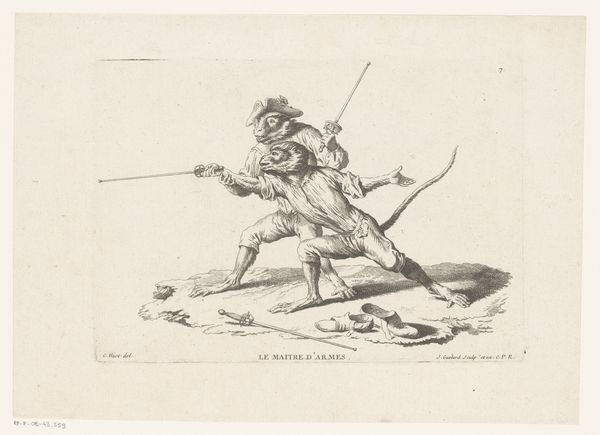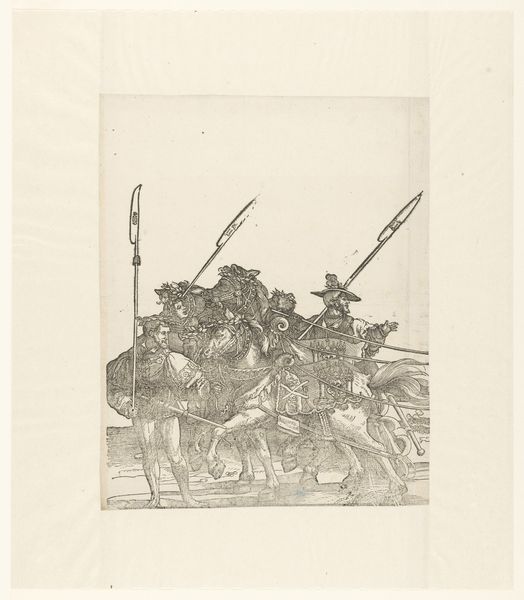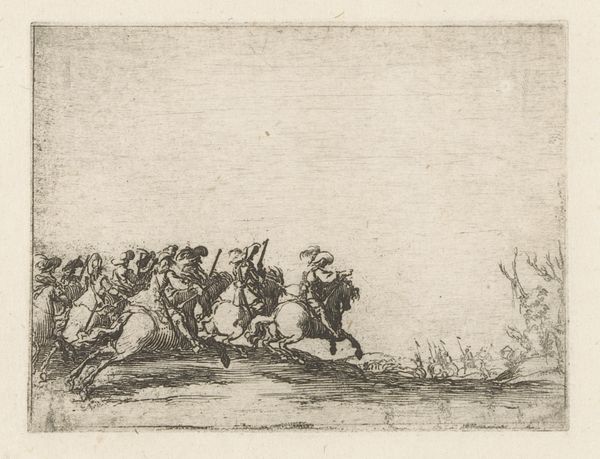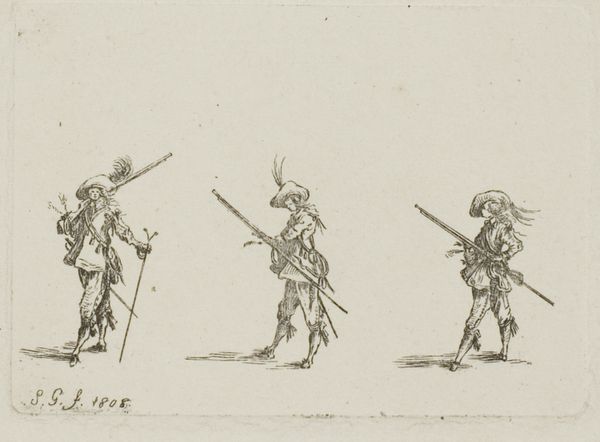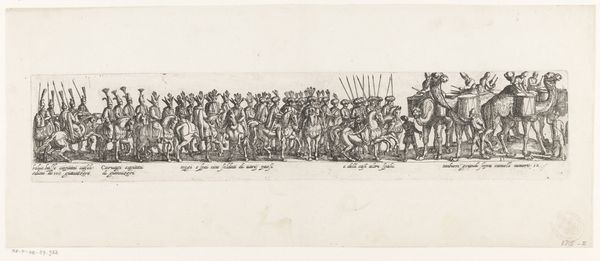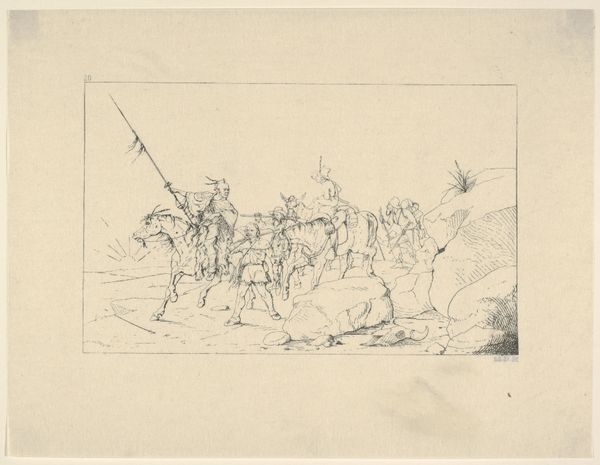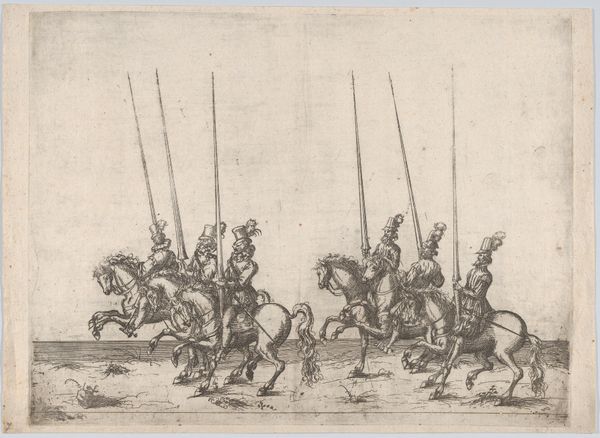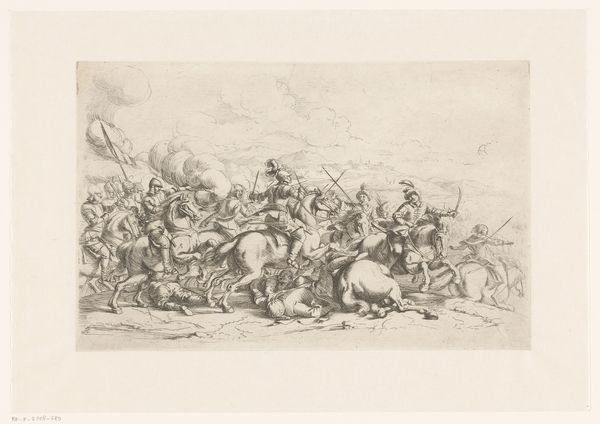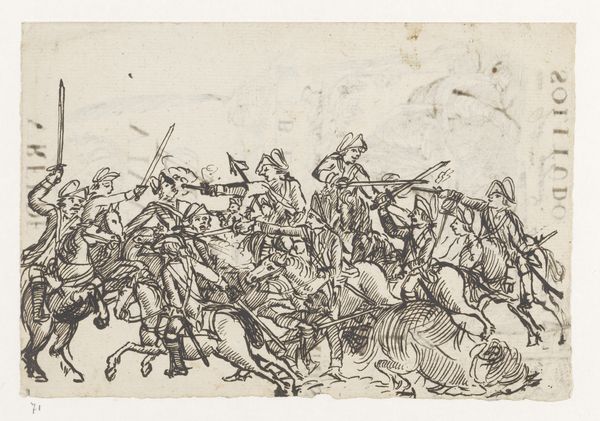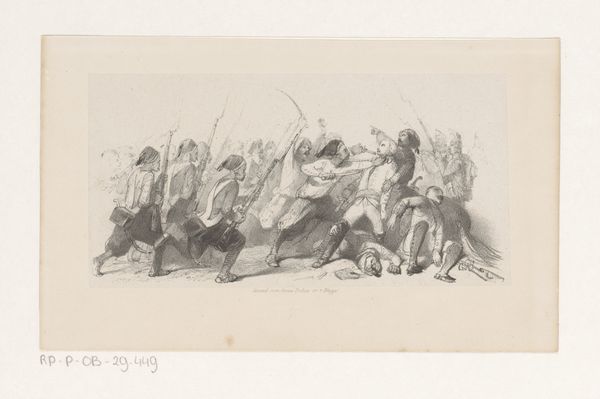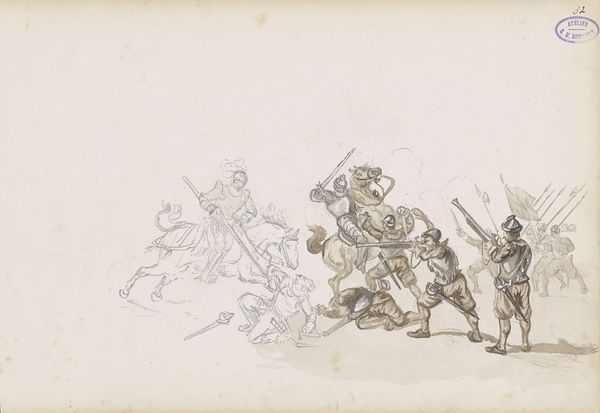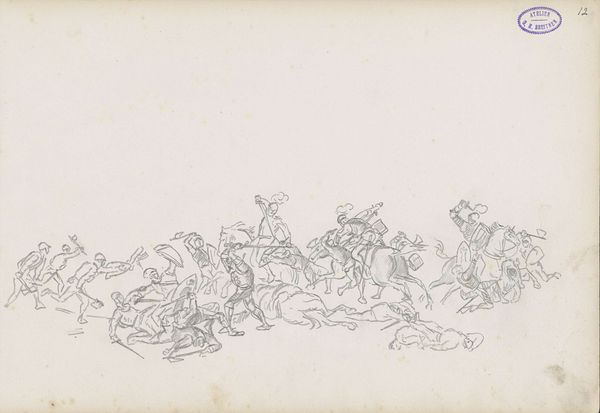
print, etching
#
narrative-art
# print
#
pen sketch
#
etching
#
pencil sketch
#
etching
#
figuration
#
pen-ink sketch
#
history-painting
Dimensions: height 38 mm, width 120 mm
Copyright: Rijks Museum: Open Domain
Curator: This intriguing piece is entitled "Duel with Bystanders," an etching that the Rijksmuseum attributes to Joannes Bemme and dates from sometime between 1800 and 1841. Editor: My initial feeling is a scene caught in frantic action, a messy affair, if you will. The sketchiness emphasizes movement, making it feel almost like a live report. Curator: That immediacy is striking. Bemme’s use of etching, with its fine lines, captures a rather chaotic social ritual. Dueling was a highly structured event, yet the "bystanders" here disrupt that sense of order. We need to examine what the scene can tell us about honor and the performance of masculinity in the period. Editor: Absolutely. There’s an undercurrent of tension between the formalized combat and the gawking onlookers, with some appearing perhaps a little too engaged? You have to wonder what social strata are depicted and if they would have even the opportunity to witness this spectacle, let alone be a part of it. It feels a bit subversive, almost commenting on the theatricality of violence, a masculine dance. Curator: It also might be a critique of the social norms surrounding dueling. Although it may seem glamorous on the surface, this print reminds viewers that the line between honor and barbarity is very fine, especially in a time when these behaviors of violence were more acceptable within society's hierarchies. Editor: I’d agree that by centering the onlookers, those otherwise on the fringes, Bemme potentially democratizes the narrative. It's not just about the duelists, but also those who create the environment for it to unfold. It asks the question: who really fuels the spectacle? Are we, the viewers, complicit? Curator: Precisely. The bystanders turn the act into a performance, emphasizing the artwork’s layered commentary. By studying depictions like these, it allows for better understandings about the social impact that images create and disseminate throughout time. Editor: Ultimately, what’s exciting is how this small etching invites such expansive questions about identity, complicity, and the uneasy relationship between social convention and individual action, all these years later.
Comments
No comments
Be the first to comment and join the conversation on the ultimate creative platform.
